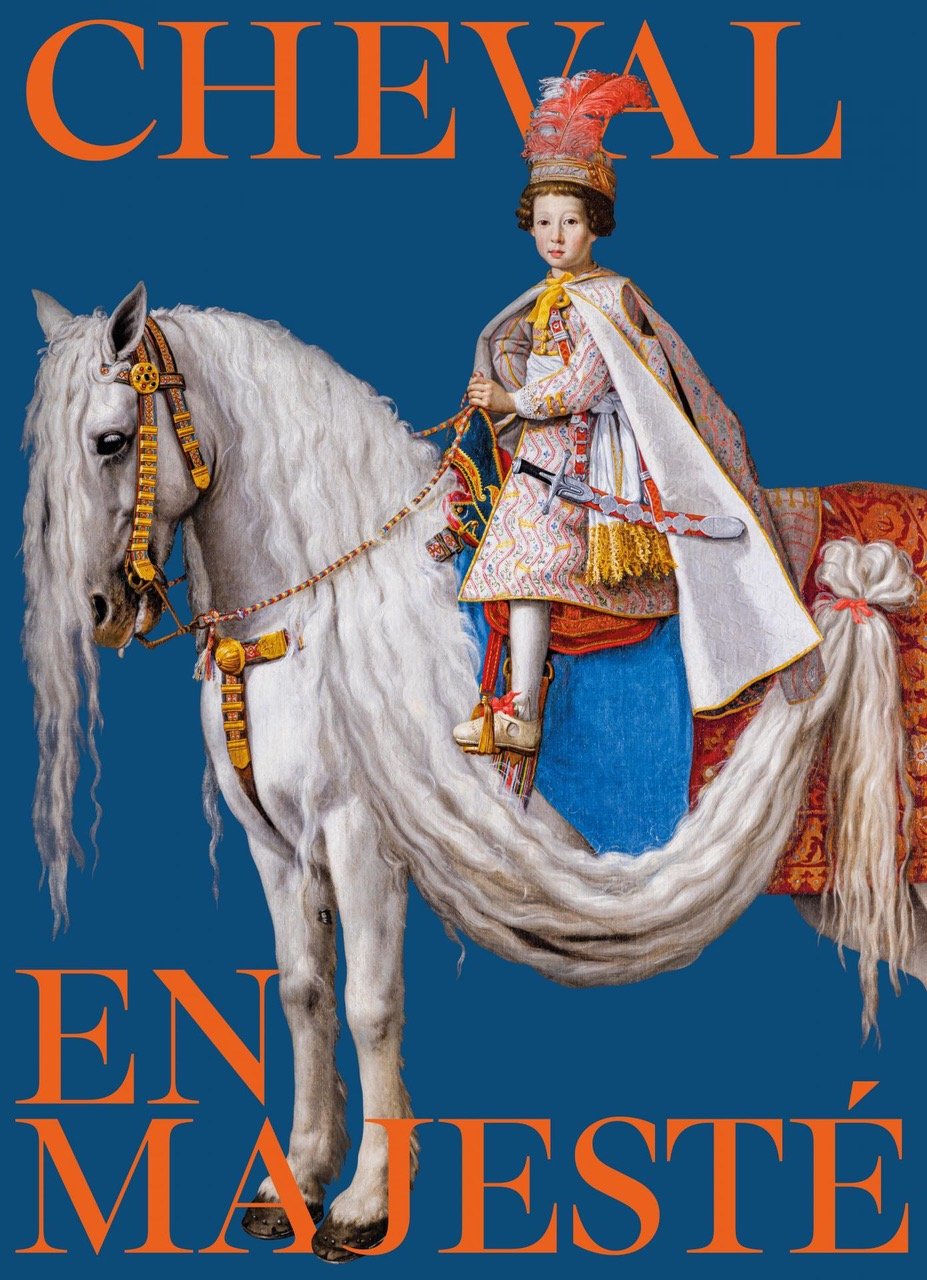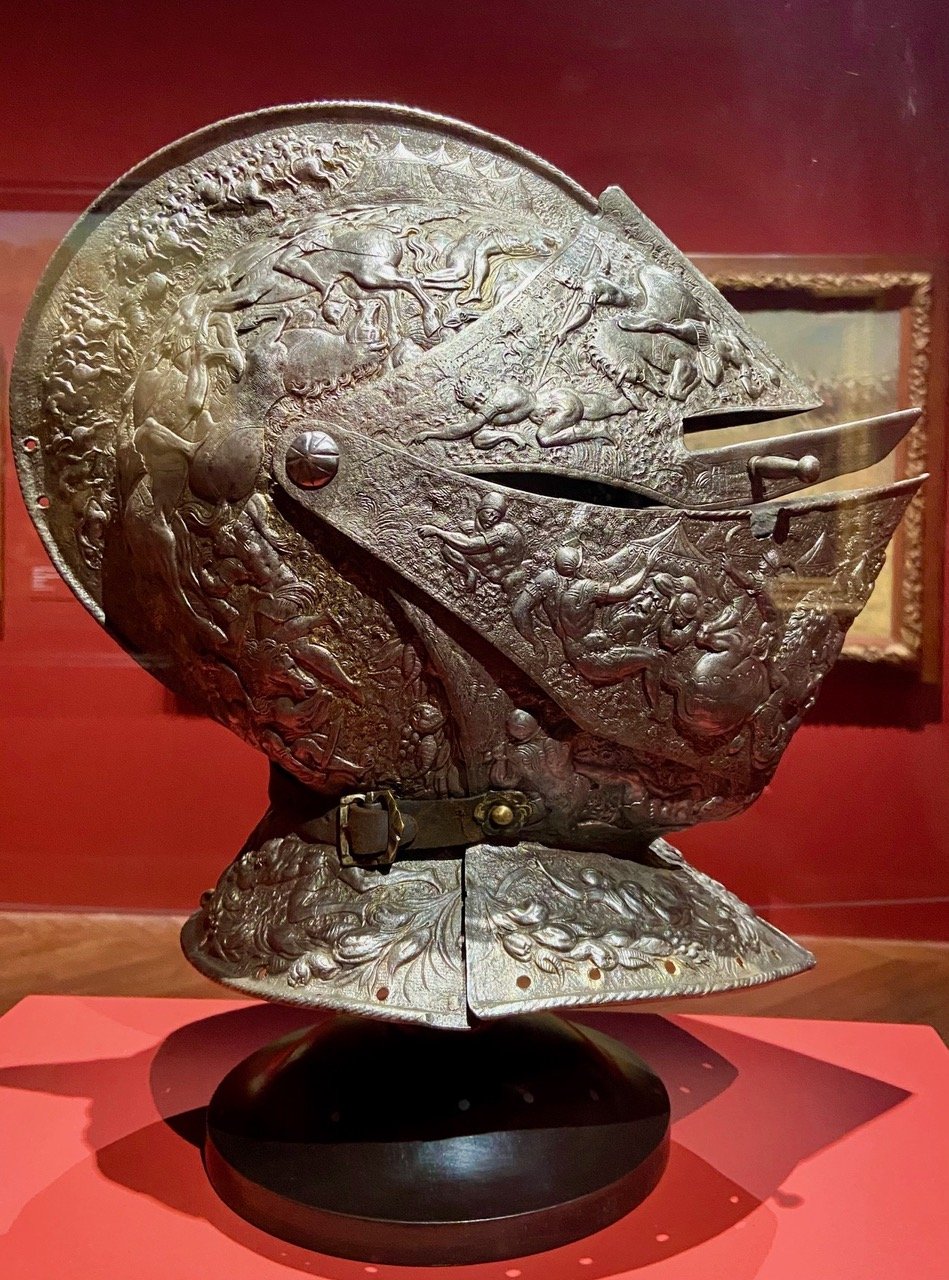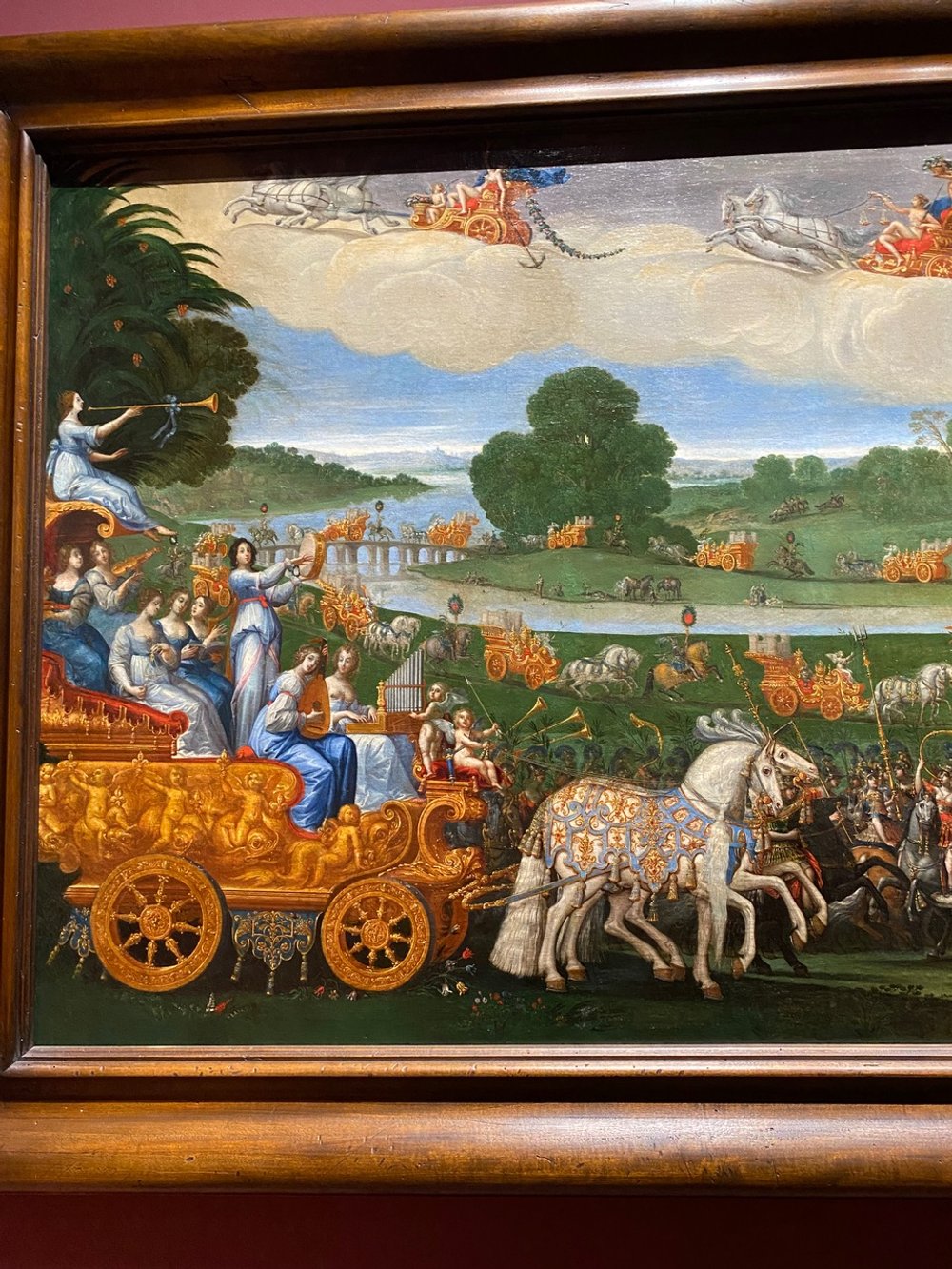Man’s (original) Best Friend
Newsletter 07.28.2024
Bienvenue and welcome back to Musée Musings, your idiosyncratic guide to Paris and art. This week, preparations for the opening ceremonies for the JO (Jeux Olympique) got underway, seriously underway. The price of metro tickets jumped from 2,15€ to 4€ per ride. And the RER is more expensive, too. Those inflated rates will last until the close of the Paralympics, September 8.
The requirement for a pass to go from one side of the Seine to another and to travel to some parts of the city, including all of the Ile St. Louis and some of the 16th arrondissement, are in place from July 18 until the opening ceremony itself, July 26.
The opening ceremonies for the JO ( jeux olympiques) in the rain on the Seine were fabulous and innovative. There were lots of historical, art historical and cultural references that I will share with you next week. In the meantime, tell me which ones you noticed.
Last Sunday, I decided to see how the closures affected me. Before starting out, I checked to see which bridges were open. Turns out that the Pont Sully, which is just beyond Blvd Henri IV which is just beyond the Bastille, was. At the Place de la Bastille, they’ve installed Olympic rings. Just as I was walking along, members of the Garde Republicaine, on horseback, in their Napoleonic uniforms, made their way around the Bastille. I followed them down Blvd Henri IV (I was going that way anyhow). They stopped at their stables (équirie), a former convent that had been seized by the state in 1791. I kept going. An auspicious time to be writing about a horse exhibition. (Figs 1-3)
Figure 1. Olympic Rings installed on the Place de la Bastille
Figure 2. Garde Républicaine making their way down Boulevard Henri IV
Figure 3. Equirie of the Garde Republicaine, Blvd Henri IV
All along my walk, there were barricades with armed police and vigipirate (the [mostly] guys who check your bags at museums and concert halls) officers. And soldiers, French of course, but I saw some soldiers with Korean (South Korean - this isn’t Donald Trump’s America) uniforms, too. They were blocking the streets you couldn’t go down without a pass. The passes were easy to obtain - if you needed to have one, aka if you live, as Barb does, on Ile St Louis, When I got to Blvd St Germain, it was virtually deserted. The side streets were mostly blocked off. It was very pleasant. Although certainly not for the people who own businesses where people can’t go. One restauranteur lamented that for Saturday night, 34 reservations had been canceled at the last minute by diners who didn’t have passes to get to his neighborhood. I can’t imagine that a restaurant reservation would have been enough reason to be granted access to a section of the city to which authorities are trying to limit access. This lasts only 8 days but the restauranteur is going lose 2 Saturdays of business. Surely he already knew about it, although to hear him complain, maybe not.
This week, we’re taking a Field Trip. To Versailles! It’s very easy to get to by train, specifically the RER C. The train I took terminated in Versailles, so no worrying about missing my stop. There’s another train, quicker, that I took to Chartres a few days later, which stops at Versailles. The walk from the train station in Versailles to the Chateau is easy and pleasant. And it’s a lovely little town, Versailles.
The exhibition I wrote about last week, at the Musée de la Vie romantique, was held to commemorate the 200th anniversary of Théodore Géricault’s death in 1824. The exhibition at the Chateau de Versailles, the subject of today’s review, honors this year’s Olympic equestrian events which will be held at the Chateau. (Fig 4)
Figure 4. Cheval en Magesté (The Horse in Majesty) Versailles
The subject of horses and humans is huge. Horses and humans have been together for a very long time. Humans began riding horses about 5,500 years ago.
Depictions of horses appeared much earlier than that, around 30,000 B.C. E.
But those horses were wild and they were hunted for meat.
Which got me thinking about the place of horse meat in a Frenchman’s diet. There are horse meat butchers at my marché and you can buy horse meat for human consumption at supermarkets. I often pass a boutique that sells socks where horse meat was once sold. The sign is really nice, I imagine that’s why they’ve kept it. (Fig 5)
Figure 5. Chausettes (sock) boutique in former Horsemeat butchers, rue de Vielle du Temple
Anyhow, turns out it wasn’t until the 19th century that people began to seriously consider eating horse meat. Before that, to eat ones companion in the hunt and in war was both a religious taboo and forbidden by law. It seems that during the 19th and 20th centuries, when beef and pork were scarce and people were poor and hungry, horse meat was the meat of last resort. That’s mostly over now.
This exhibition is about the role of the horse in Western civilization. Not all of Western Civilization, of course, but specifically from the Renaissance through the First World War. From the 16th century to the early 20th century. From when horses and horse-drawn carriages got people and products from one place to another to when steam and diesel engines took over. The director of the Chateau and co-curator of the exhibition, Lauren Salomé calls the end of the First World War, “the end of horse civilization.” The moment when horses went from being essential to everyday life to being relegated to the realm of leisure.
Not surprisingly, the focus of the exhibition is when French Kings and their horses and their influence reigned supreme.
Someone asked Salomé what his favorite work in the exhibition is. It’s my favorite, too! The Equestrian Portrait of Leopoldo de’ Medici (1624-25) by the Florence-based Flemish painter Justus Sustermans. It’s a huge, white horse with a Rapunzel-like mane, that goes on and on and on. Atop which sits a truly bewildered, doll-like, ornately dressed little boy - Leopoldo de Medici. It’s the exhibition’s poster. (Fig 6)
Figure 6. Exhibition Poster, Versailles
The idea of an exhibition about horses at the Chateau has apparently been in the works for quite a while. Exhibitions take much longer to organize than you might imagine - first there’s deciding upon the story you want to tell, then there’s the research required to tell it properly. Then there’s the search for works of art that best tell your story. Finally there’s the logistical nightmare of convincing institutions to loan your institution works of art in their collection. Which is probably a lot easier when you happen to be asking for an exhibition to be held at the Chateau of Versailles.
This exhibition differs from previous exhibitions at the Chateau in two ways. Firstly, it’s being held when they don’t hold temporary exhibitions - in the summer, when the palace is already too crowded. Secondly, the exhibition is not confined to a particular space. As you make your way through the exhibition, you are sometimes in spaces dedicated to the exhibition and sometimes in spaces, like the King’s State Apartment, the Hall of Mirrors, Madame Maintenon’s Apartment and the Dauphine’s Apartment, where you are bumping into people who are wandering around aimlessly or looking for the toilet or the exit. Completely fabulous and kinda funny, too. (Fig 7)
Figure 7. Horses & Men in Armor, Hall of Mirrors, Versailles
The exhibition opens with a display of horse portraits and equestrian portraits of the princes, kings and emperors who ruled Europe until those kinds of people didn’t rule Europe anymore. Like dogs bred for the hunt, these horses had names. (Figs 8,9)
Figure 8. Gallery of Horse Portraits, Kortom, King Karl XI of Sweden’s horse
Figure 9. Le Charmant Anglois, La Ville de Combray, King's Horses Series, early 18th century
There are portraits of Charles Xl of Sweden’s and Queen Victoria of England’s horses. And portraits of both of them on their horses. The Italian ambassador noted of Charles XI, “while he often appeared ill at ease among his peers, once on horseback, he developed confidence, self-assurance and the bearing of a true monarch.” (Fig 10)
Figure 10. Charles XI of Sweden, von Draft, 1696
Edwin Landseer’s 1865 portrait of Queen Victoria shows her atop her favorite pony, Flora. A pair of gloves and letters are strewn on the ground around her. She’s definitely not going to be picking them up. She’s in black, in mourning for her husband, as she was until her own death, 40 years later. Her faithful servant and friend John Brown stands at her side, as do the queen’s favorite dogs, Sharp and Skye. (Fig 11)
Figure 11. Queen Victoria on Flora, Edwin Landseer, 1865
Making the biggest splash of all is the famous and fabulous equestrian portrait of Napoleon at St. Bernard Pass by J.L. David. Napoleon’s mighty stead rears at the spot where Hannibal and Charlemagne crossed the Alps before him. This is one of five almost identical portraits David did. This one, for which Napoleon’s horse Marengo posed, is in the Chateau of Versailles’s own collection. (Fig 12)
Figure 12. Napoleon at St. Bernard’s Pass, Jacques Louis David, Versailles collection
Two very large sections of the exhibition are filled with drawings and log books, all focusing on the Small Stables and the Great Stables at Versailles, which were built from 1679 to 1682. (Figs 13, 14) Together, they take up more space than the palace itself. Which makes sense, of course, stables can’t be built up, they can only be built on ground level. The number of horses housed at Versailles increased steadily throughout the Ancien Régime. There were around 400 in 1680 and a century later, just before the French Revolution, there were more than five times as many - 2,208.
Figure 13. The Great Stables, Versailles, 1679-1682
Figure 14. Small Stables, drawing, Versailles 1679-1682
In the Small Stables, horses were organized according to who used them: the King, the Dauphin or carriages. In the Great Stables, horses were organized by ‘job.’ Horses for the hunt, horses for the reviews, horses for the riding school.
The riding school was where the very best equerries taught the royals how to ride. It was an essential part of their education because the commonly held belief was that a king’s horsemanship was a reflection of his ability to rule. If a king could make a horse obey his commands, he would be able to lead his subject, too. (Fig 15)
Figure 15. Louis XIV age 30, on horseback
Attitudes toward horse training and treatment changed radically in the 18th century. “New principles of horse riding.. favored sensitivity and kindness rather than coercion and brutality .…” “Tact, gentleness and cooperation” was encouraged and training was “adapted to the nature and psychology of the horse.” The medieval philosophy of ‘beating the horse into submission’ finally disappeared.
Which reminded me that ideas about child raising were being discussed simultaneously. Before the Enlightenment, when children were considered miniature adults, the “primary goal of parenting was to discipline and break the will of a child via physical means.” Exactly how horse trainers mastered their horses. During the Enlightenment, philosophers like John Locke and Jean Jacques Rousseau urged a reassessment of attitudes towards children and childhood. Locke wrote that children respond to praise, they require examples rather than rules, and correction rather than corporal punishment. (Foyster & Marten, A Cultural History of Childhood and Family in the Age of Enlightenment. 2010) (Figs 15 - 17)
Figure 16. Portrait of an Interior, Le Nain brothers, 17hth century French
Figure 17. Paternal Love, Etienne Aubry, 18th century
And what came next, after all that ‘feel good’ information about the humanitarian ways in which horses came to be trained in the 18th centuries? Only the insanity of battle and the senseless slaughter of those same horses and their riders during times of war. Some of the best known art works are in this section, starting with Rubens’ copy of Leonardo’s lost fresco, The Battle of Anghiari in which “horses and riders merge to form a furious and spectacular mass.” (Figs 18 - 21) As at the Gericault exhibition which I discussed last week, paintings in this section show dead and dying horses, sometimes huddled next to corpses of their riders. (Figs 22, 23)
Figure 18. Battle of Anghiari, after Rubens drawing, after Leonardo fresco
Figure 19. Horses in Combat, Eugene Delacroix
Figure 20. La Pucelle, Jeanne d’Arc, Frank Craig
Figure 20a. Artist’s reference is PIsanello’s Battle of San Romano
Figure 21. Dead and dying horses on the battlefield
Figure 22. Dying horses, sketch, Charles Le Brun
Figure 23. Dying horse with dead and dying soldiers
The next sections are, thank goodness, lively ones - ceremonial armor and the ceremonies during which man and horse wore these elaborate costumes. There are helmets and shields; drawings and illuminated manuscripts. (Figs 24-27) Somehow, this section morphs into photographs of women riding horses at the circus, the everyman’s successor to those courtly entertainments. (Figs 28, 29)
Figure 24. Helmet
Figure 25. Horses in fireworks display, Versailles
Figure 26. Drawing of Ceremony with horses and riders in costume
Figure 27. Elements, detail
Figure 28. Mlle Blanche Allarty, equestrienne
Figure 29. Equestrienne celebrated as the (dancer) Loli Fuller of horseback riding
One of the final sections was Horses and Science. Lots of anatomical studies with drawings by the masters, as for example, Charles LeBrun and Giorgio Vasari; Andrea del Verrocchio and his student, Leonardo de Vinci.(Figs 30 - 32)
Figure 30. Skeleton of a horse
Figure 31. Drawing of a horse, Andrea Verrocchio
Figure 32. Drawing of a horse, Leonardo de Vinci
In another section called, The Horse as Art Subject, paintings by Delacroix and Gericault - some filled with passion, some filled with pathos. From the Louvre is one of Gericault’s best, White Horse Head (1814-15). In fact, the paintings by Gericault at Versailles are better than paintings by Gericault at the Musee de la Vie romantique. I guess it was more prestigious to lend a painting to Versailles …(Figs 33, 34)
Figure 33. White Horse Head, Theodore Gericault, 1814-15
Figure 34. Horse rearing, Eugene Delacroix
The final section is Horses and Legends, which includes both a painting and a statue of Lady Godiva on her horse. (Figs 35, 36) Do you know the story of Lady Godiva? It’s an English tale from about 1040. Lady Godiva’s husband Leofric, imposed a very harsh tax on the people of Coventry. She pleaded with him to abolish the tax. He got so tired of her begging that he said, if she rode through town naked, on horseback, he would cancel the tax. Being a very modest woman, she asked all the townspeople to draw their curtains so that they wouldn’t see her, riding in the streets, naked, covered only by her long hair. Everyone did as she asked except a man named Tom, who was going to peep through his curtains to see her ride by. At the last minute, he was struck blind! So, that’s the legend of Lady Godiva and a cautionary tale of what (should) happen to would be Peeping Toms! .
Figure 35. Lady Godiva
Figure 36. Lady Godiva
The final section called, From One Civilization to Another is one image only. (Fig 37) I don’t know if the curators ran out of time or space or decided that this single painting was a poignant enough, wry enough, evocation of the end of the equestrian era. A 1000 year old way of life that was transformed in a matter of decades by the arrival of the railway and automobile.
Figure 37. Painting of Cars arriving in Horse drawn carriages.
The exhibition’s opening statement is a nice way to end this celebration of man’s second best friend. It’s from the 18th century naturalist, the Comte de Buffon, keeper of the King’s garden which is now one of my favorite haunts, the Jardin des plantes, “Mankind's most noble conquest is that of this proud and spirited animal that shares with him the fatigues of war and the glory of victory; that also shares the pleasures of the hunt, the tournament and the race, at which he shimmers and shines.”
Gros bisous, Dr. B.
When man and horse were as one
Copyright © 2024 Beverly Held, Ph.D. All rights reserved
Dear Reader, I hope you enjoyed reading this article. Please sign up below to receive more articles plus other original content from me, Dr. B. Merci!
And, if you enjoyed reading this review, please consider writing a comment. Thank you!







































